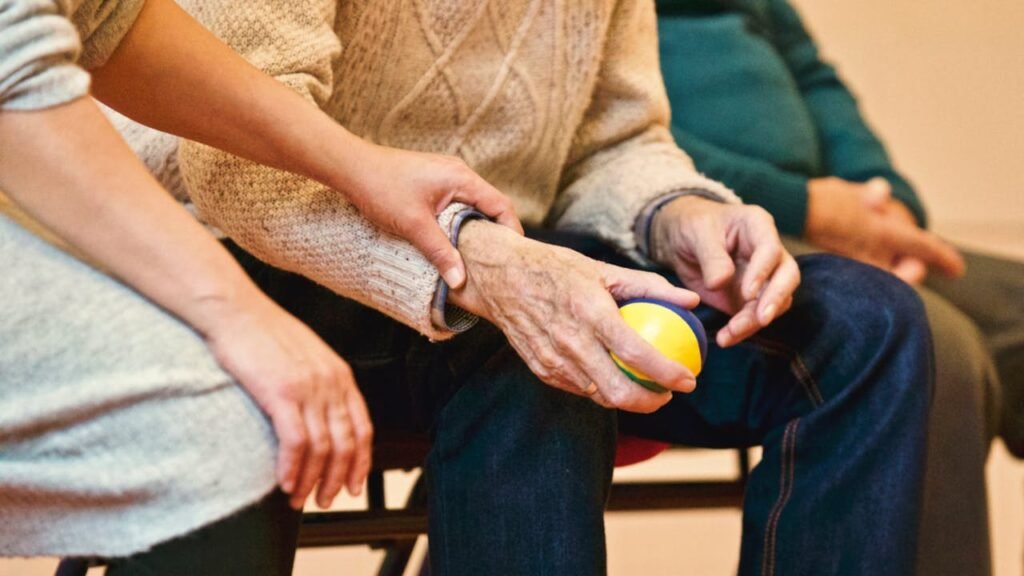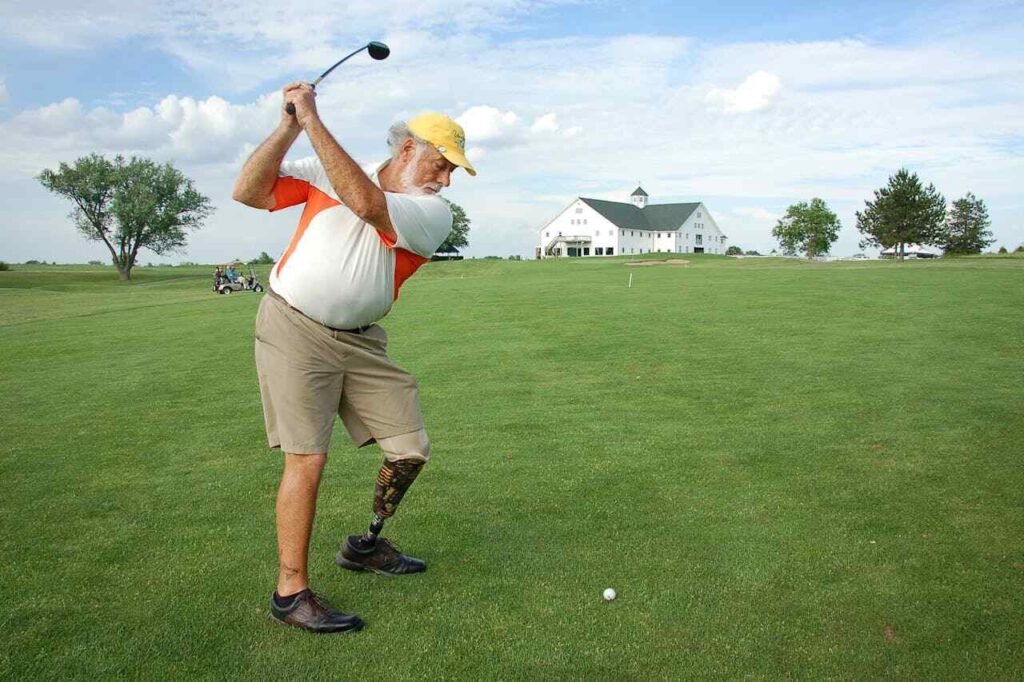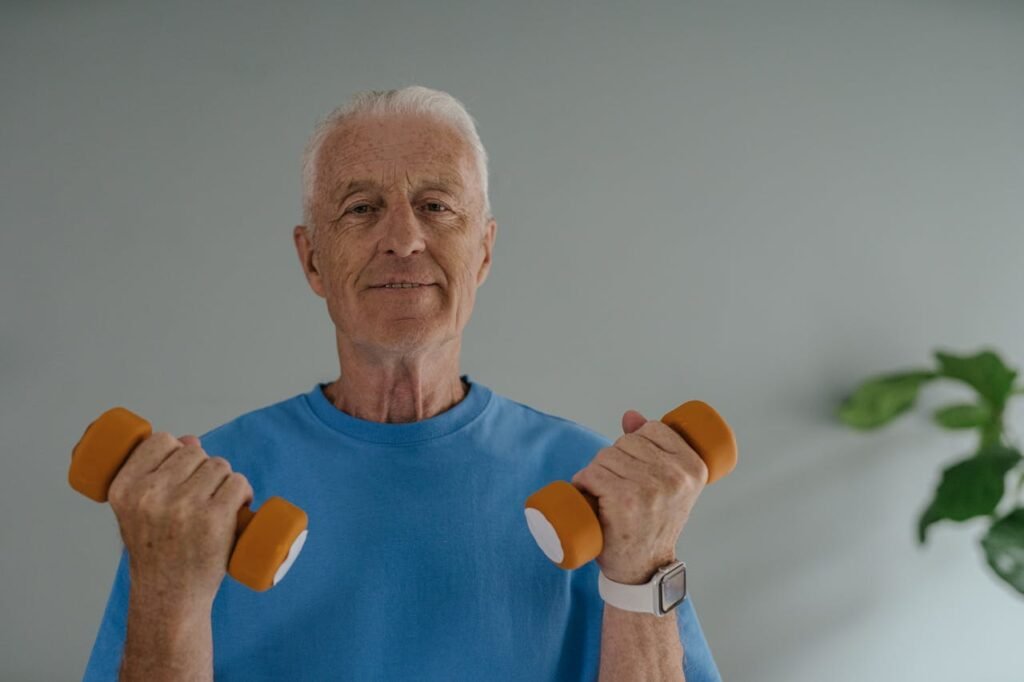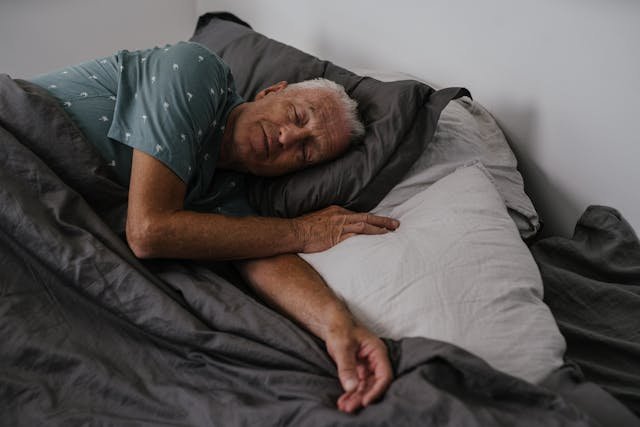A good night’s sleep is one of life’s quiet blessings. It refreshes the body, clears the mind, and keeps the heart strong. Yet, for many seniors using prosthetics, sleep doesn’t come easily. Between changes in body position, socket pressure, and worries about comfort, nights can feel long and restless.
But peaceful sleep is possible—with the right routine, the right care, and a few simple habits. Rest isn’t a luxury; it’s part of healing and living well. A good night’s sleep can make your days brighter, your energy stronger, and your outlook more positive.
In this guide, we’ll walk through practical, heart-centered ways to help seniors using prosthetics sleep deeply and comfortably. You’ll learn how to create a bedtime routine that soothes your body, relaxes your mind, and helps you wake up feeling refreshed and confident.
Understanding Sleep Challenges with Prosthetics
The Body’s Need for Rest

As we grow older, our bodies change in many ways. Muscles lose some strength, joints become stiffer, and skin becomes more sensitive. When you add a prosthesis to the mix, these changes can sometimes affect how easily you fall asleep or stay asleep.
Sleep is the time when your body repairs itself. It restores your energy, calms your nerves, and prepares your muscles for a new day. Without it, everything—from your mood to your balance—can feel off. That’s why sleep deserves the same care and attention as your prosthetic limb.
Common Sleep Discomforts for Seniors Using Prosthetics
Many seniors experience specific challenges that can interrupt sleep. Some feel soreness or mild swelling in the residual limb after a day of activity. Others find it hard to find a comfortable sleeping position.
Sometimes, anxiety or fear of damaging the prosthesis can cause people to stay alert at night instead of relaxing. Even small changes, like the sound of the prosthetic parts when shifting in bed, can disrupt rest.
These are real challenges—but they are not permanent. With the right adjustments and preparation, your body can learn to relax again.
The Connection Between Sleep and Prosthetic Comfort
Your prosthesis works with your body throughout the day. At night, your body needs time to rest and rebalance. That’s why proper nighttime care of your prosthetic limb—and the skin beneath it—is so important.
When the skin is clean, the socket is dry, and your body feels relaxed, your nervous system can settle into a deep, restful rhythm. Quality sleep then improves your overall health, making your prosthesis feel lighter and easier to manage the next day.
Preparing the Body for Rest
Gentle Evening Movement
A short round of light stretching or movement can do wonders before bedtime. Gentle leg lifts, arm rotations, or slow walking around the room for five minutes helps release tension built up during the day.
These small motions improve circulation, especially around your residual limb, and reduce stiffness. You don’t need to do much—just enough to let your body know it’s time to slow down.
If you wear a prosthesis during the day, try removing it before doing your stretches. It allows your muscles to breathe and rest freely. Focus on smooth, calm movements rather than effort or speed.
Warm Showers to Relax Muscles
A warm shower before bed relaxes tired muscles and soothes the skin. For seniors using prosthetics, this simple habit can make a big difference.
The warmth helps improve blood flow to the residual limb, reducing mild swelling or soreness. Make sure to dry the limb thoroughly afterward to prevent moisture buildup before sleep.
If you prefer not to shower, a warm towel compress on your residual limb can work just as well. It relaxes muscles and prepares your body for a night of deep rest.
Light Meals and Hydration
What you eat before bedtime affects how well you sleep. Heavy meals or caffeine late in the evening can cause restlessness. Instead, choose something light like a glass of warm milk, a banana, or a small bowl of oats.
Drink enough water during the day but reduce intake in the last two hours before bed. This prevents the need to wake up frequently for bathroom visits.
A calm stomach leads to a calm mind, and that’s the perfect start for restful sleep.
Caring for Your Prosthesis Before Bed
Cleaning and Inspection
Every evening, give your prosthesis a few minutes of attention. Wipe it gently with a clean, dry cloth to remove sweat or dust. If your model uses a liner or sleeve, wash it as instructed by your prosthetist.
Inspect the limb and socket for any redness, cracks, or small irritations. These small checks prevent bigger discomforts later. When your prosthesis is clean and ready for the next day, your mind can rest peacefully too.
Skin Care and Moisturization
Your skin works hard every day inside the prosthetic socket. At night, it needs time to breathe and recover. Use a mild, non-greasy moisturizer on your residual limb before bed. It helps restore natural oils and keeps the skin soft.
Avoid using heavy creams or applying lotion immediately before wearing the liner again in the morning, as it can make the skin slippery. Instead, give your skin time to absorb the moisture fully.
If you notice any irritation, use soothing ointments recommended by your prosthetist and let the area rest overnight.
To Sleep with or Without the Prosthesis
Most seniors sleep better without their prosthetic limb. Removing it allows your body to relax naturally, especially if your prosthesis feels tight after a long day.
However, if your doctor or physiotherapist has advised you to wear it during sleep—perhaps for medical alignment reasons—ensure it’s properly adjusted and comfortable.
Always follow your prosthetist’s advice. Comfort and safety should guide your decision every night.
Finding the Right Sleeping Position
Back Sleeping for Even Pressure
Sleeping on your back is often the most comfortable position for prosthetic users, especially those with lower-limb prostheses. It distributes your body weight evenly and reduces pressure on your residual limb.
Place a soft pillow under your knees to keep them slightly bent, which improves circulation. For extra comfort, use a small cushion under your residual limb to prevent any contact with the mattress.
This position also supports spinal alignment, which helps you wake up feeling less stiff.
Side Sleeping for Comfort and Warmth
If you prefer sleeping on your side, choose a side that feels more comfortable for your residual limb. Use a pillow between your knees or thighs to prevent rubbing and maintain natural hip alignment.
For upper-limb prosthetic users, resting your arm on a pillow can prevent shoulder strain and improve comfort. Make sure the prosthetic area isn’t pressed against hard surfaces.
Many seniors find this position comforting because it feels natural and cozy, especially in cooler months.
Avoiding Stomach Sleeping
Sleeping on your stomach might feel relaxing for a few minutes but can cause strain on your neck, spine, and prosthetic area. It may also press on your residual limb unevenly, leading to discomfort or mild swelling by morning.
If you occasionally sleep this way, use a thin pillow or none at all under your head, and make sure your residual limb is not trapped under your body weight.
Learning to adjust your position may take time, but once you find what works, your sleep will feel effortless and refreshing.
Creating a Calming Night Environment
The Right Mattress and Pillow

The surface you sleep on plays a huge role in your comfort. A medium-firm mattress usually works best—it supports your joints without feeling too hard.
Memory foam mattresses can adapt to your body’s shape, reducing pressure on sensitive areas. If you notice soreness or uneven pressure, consider adding a mattress topper for extra cushioning.
Your pillow should support your head and neck without lifting it too high. When your spine is properly aligned, your entire body rests more deeply.
Controlling Room Temperature
Seniors often sleep better in slightly cooler rooms. Aim for a temperature between 20°C and 23°C. Too much heat can make your skin sweat, which can irritate your residual limb if it’s still healing or sensitive.
If your prosthesis makes you feel warmer, use light cotton sheets that allow air to circulate freely. In winter, choose breathable blankets that provide warmth without heaviness.
Maintaining a steady, comfortable temperature tells your body it’s time to slow down and rest.
Reducing Light and Noise
Light and sound can keep your brain alert even when you want to sleep. Try to dim lights at least 30 minutes before bedtime. Draw curtains or use an eye mask if streetlights enter your room.
For noise, a quiet fan or soft background sound—like nature music—can help mask outside distractions. These small details tell your body it’s safe and calm, encouraging sleep to come naturally.
Keeping Electronics Away
Phones, televisions, and tablets give off bright light that confuses the brain’s sleep cycle. Try turning off screens at least half an hour before bed.
Instead, use this time for quiet activities like reading, journaling, or listening to soft music. This signals your brain that it’s time to unwind.
If you use your phone as an alarm, place it across the room so you won’t be tempted to scroll before bed.
Relaxing the Mind for Better Sleep
Letting Go of the Day
At night, the mind often keeps replaying the day’s events. You might think about appointments, family, or small worries. This mental activity can delay sleep.
Before lying down, take a few minutes to breathe deeply. Inhale through your nose for four counts and exhale through your mouth for six. Repeat until you feel your shoulders relax.
If you like, you can also keep a small notebook beside your bed. Write down anything that’s bothering you, then close the book. This simple act tells your mind to let go for the night.
Practicing Mindful Relaxation
Mindfulness helps you focus on the present moment instead of your thoughts. Try closing your eyes and paying attention to your breath, one gentle inhale and exhale at a time.
If your mind wanders, simply bring your attention back to your breathing. This slows your heart rate, calms the nervous system, and makes it easier to fall asleep.
Some seniors find guided meditations or soft instrumental music helpful too.
The Comfort of Routine
Going to bed at the same time every night trains your body to expect rest. This rhythm keeps your sleep cycle steady.
You can create a simple bedtime ritual: take a warm shower, clean your prosthesis, apply moisturizer, dim the lights, and relax with quiet breathing.
This gentle routine reminds your body that it’s time to rest—and helps you drift off naturally.
Emotional Comfort and Nighttime Peace
Accepting the Day with Gratitude
As evening comes, it helps to pause and feel thankful for the day. This small moment of gratitude shifts your focus from worry to peace. You can simply say to yourself, “I did my best today,” and let that be enough. Many seniors who use prosthetics find this mindset powerful. It reduces mental tension and prepares the heart for calm rest.
Even if your day was tiring or challenging, acknowledging what went right helps your mind settle. Gratitude doesn’t just comfort the spirit—it actually changes how the brain processes stress. You’ll notice that sleep feels easier when your thoughts are gentle and kind.
Finding Emotional Stillness
An active mind often keeps people awake. You might think about the next day’s errands, your prosthesis maintenance, or even old memories. These thoughts can quietly tighten your muscles and raise your heart rate. To stop this cycle, you can create a simple stillness practice before bed.
Sit comfortably, place one hand on your chest, and take slow, steady breaths. Feel your heartbeat slow down with each exhale. Let your mind focus on the rhythm of your breath and nothing else. When the body senses stillness, sleep comes naturally.
Some people also find comfort in prayer or reading a few lines of something uplifting. These quiet rituals help bridge the day and the night peacefully.
Emotional Support from Family
Sometimes, sleep troubles are not about pain or position—they’re about loneliness. Seniors who live alone may find it harder to relax at night. A simple phone call from family or a short visit before bedtime can make a huge difference.
If possible, share your sleep struggles with loved ones. Let them know how they can help—perhaps adjusting your bedding, checking room temperature, or just listening to your day. Emotional reassurance is a strong sleep medicine, and love is the calmest lullaby there is.
Managing Pain and Nighttime Discomfort
Understanding Residual Limb Sensitivity
Many seniors with prosthetics feel mild discomfort in their residual limb after a long day of activity. It can feel like a dull ache, tingling, or warmth. These sensations often result from muscle fatigue or mild swelling. Recognizing them early and addressing them gently helps prevent long nights of tossing and turning.
If the discomfort feels strong, elevate your limb slightly with a soft pillow to reduce pressure. Some people find that gently massaging around—not directly on—the limb helps ease tension and encourages blood flow.
Gentle Heat and Cold Therapy
Temperature therapy can be soothing before bedtime. If your residual limb feels tight or sore, a warm compress can relax the muscles. Hold it in place for about ten minutes while sitting comfortably. On the other hand, if the area feels swollen or inflamed, a cold gel pack wrapped in a thin towel can help reduce it.
Always make sure to test the temperature before applying anything to your skin. Sensitive areas may react more strongly, so mild warmth or coolness works best.
When to Adjust or Refit
Persistent pain or pressure points at night may mean that your prosthesis needs an adjustment. With daily wear, small changes in body shape or weight can alter how the socket fits. If you notice recurring soreness or redness, schedule a check with your prosthetist.
Good sleep depends on comfort and trust in your prosthesis. Once everything fits properly again, sleep tends to improve naturally.
Adapting to Temperature and Seasonal Changes
Staying Cool in the Summer
Warm nights can make sleep uncomfortable, especially for prosthetic users. Extra heat may cause perspiration around the socket area, leading to irritation. Keeping your room cool, around 22 degrees Celsius, helps prevent this.
Use breathable cotton sheets and lightweight pajamas. If your prosthesis uses a silicone or gel liner, consider removing it at night to allow your skin to breathe fully. A small fan near your bed can improve air circulation without being noisy.
Drinking cool water before bed (but not too much) keeps you hydrated and helps the body regulate temperature.
Keeping Warm in the Winter
Cold weather can make your limb feel stiff, which may disturb sleep. Before bed, wrap yourself in a soft blanket and do a few gentle stretches to warm up your muscles. If your residual limb feels cold, a light fabric wrap can help maintain warmth without restricting blood flow.
Avoid using direct heat sources like hot water bottles or electric blankets on your limb, as they can cause uneven warmth and irritation. Choose layered bedding that allows you to adjust easily through the night.
The Role of Humidity
Extremely dry or humid air can affect skin health and comfort. A humidifier in winter helps prevent dryness, while a dehumidifier in the monsoon keeps the air fresh and skin calm. Small adjustments like these make nights far more restful.
Senior-Specific Relaxation Techniques
Progressive Muscle Relaxation

This technique helps your body release built-up tension from head to toe. As you lie down, start by gently tightening and then relaxing each muscle group—beginning from your feet and working upward.
Focus on your breath as you do this. Each time you release a muscle group, imagine stress leaving your body. Seniors using prosthetics often find this method especially helpful because it reconnects them to parts of the body that may feel distant or tense.
Guided Visualization
Visualization is like daydreaming with purpose. Close your eyes and picture a peaceful place—perhaps a quiet beach, a garden, or a mountain path. Imagine walking or sitting there, feeling safe and relaxed.
As you focus on the sounds, scents, and sensations of your chosen place, your mind drifts away from physical awareness and slips into calm. Many seniors report falling asleep mid-visualization because their breathing becomes steady and their hearts slow down.
Breathing with Intention
Simple breathing exercises can transform restless nights into restful ones. Try inhaling for four seconds, holding for three, and exhaling slowly for six. This gentle rhythm signals the brain that it’s time to rest.
If you prefer, you can place one hand over your residual limb and imagine each breath flowing warmth and comfort there. It’s a way to build connection with your body and thank it for supporting you throughout the day.
Emotional Healing Through Nighttime Reflection
Accepting the Journey

Using a prosthesis brings both challenges and triumphs. At night, as the world grows quiet, many seniors think about how life has changed. These reflections can feel heavy at times, but they also hold deep healing potential.
You might think back to when you first started using your prosthesis, how uncertain it felt, and how far you’ve come since then. Realizing your strength creates peace. Sleep becomes easier when your heart feels proud and accepting.
Turning Reflection into Hope
Instead of replaying worries or regrets, focus on what you’re grateful for. Maybe it’s your improved mobility, your independence, or the support of your family. Each thought of gratitude helps your brain release calm, sleep-inducing hormones.
Some seniors keep a small gratitude journal on their nightstand. Writing a few lines before turning off the light helps end the day on a positive note.
Releasing the Day Gently
If something troubled you during the day—pain, frustration, or worry—try a short forgiveness practice before bed. Silently say, “I release this moment. I choose rest.” It’s not about ignoring problems but allowing your mind to rest so you can face tomorrow renewed.
Emotional release is as vital to sleep as physical comfort.
Strengthening the Connection Between Rest and Daily Energy
The Morning After a Good Night
When sleep improves, mornings feel completely different. You wake up with less stiffness, better focus, and more energy to move with your prosthesis. Even small improvements in sleep quality can greatly impact your mood and independence.
Seniors who sleep well tend to handle their prosthesis with more confidence and balance. Muscles react faster, and coordination improves. The benefits stretch far beyond bedtime—they ripple into every part of daily life.
Using Daytime Habits to Improve Night Rest
Good sleep begins long before bedtime. Light physical activity during the day helps your body crave rest later. Even short walks, gentle cycling, or household tasks keep your natural sleep rhythm steady.
Try to spend some time in natural daylight each morning. Sunlight regulates your body clock, helping you fall asleep faster at night. Avoid long naps in the afternoon, as they can make falling asleep harder.
Hydrate well throughout the day, but reduce fluids before bedtime to prevent waking up too often.
The Circle of Rest and Mobility
Better sleep leads to better movement, and better movement leads to better sleep. This cycle creates lasting vitality for seniors using prosthetics. It supports heart health, mental clarity, and emotional well-being—all through the simple act of restful nights.
Conclusion: Rediscovering Rest with Confidence
Sleep is not just a physical need—it’s a quiet celebration of healing. For seniors using prosthetics, peaceful nights bring the strength and clarity needed to enjoy each new day fully. With the right care, preparation, and mindset, sleep can become a time of renewal instead of restlessness.
Your prosthesis is there to support your dreams, not stand in their way. By tending to your body, soothing your mind, and creating a calm environment, you give yourself the gift of deep rest.
At RoboBionics, we design our prosthetics with real comfort in mind—built for living, moving, and resting with ease. Every product, from the Grippy™ Bionic Hand to our lightweight mechanical designs, is crafted to help you feel confident and at peace day and night.
If you’re ready to experience better sleep, greater comfort, and renewed energy with a prosthesis that feels truly like your own, we’d love to help. You can schedule a free demo or consultation at https://www.robobionics.in/bookdemo/.
Sleep deeply, move freely, and wake up each morning ready for life.



